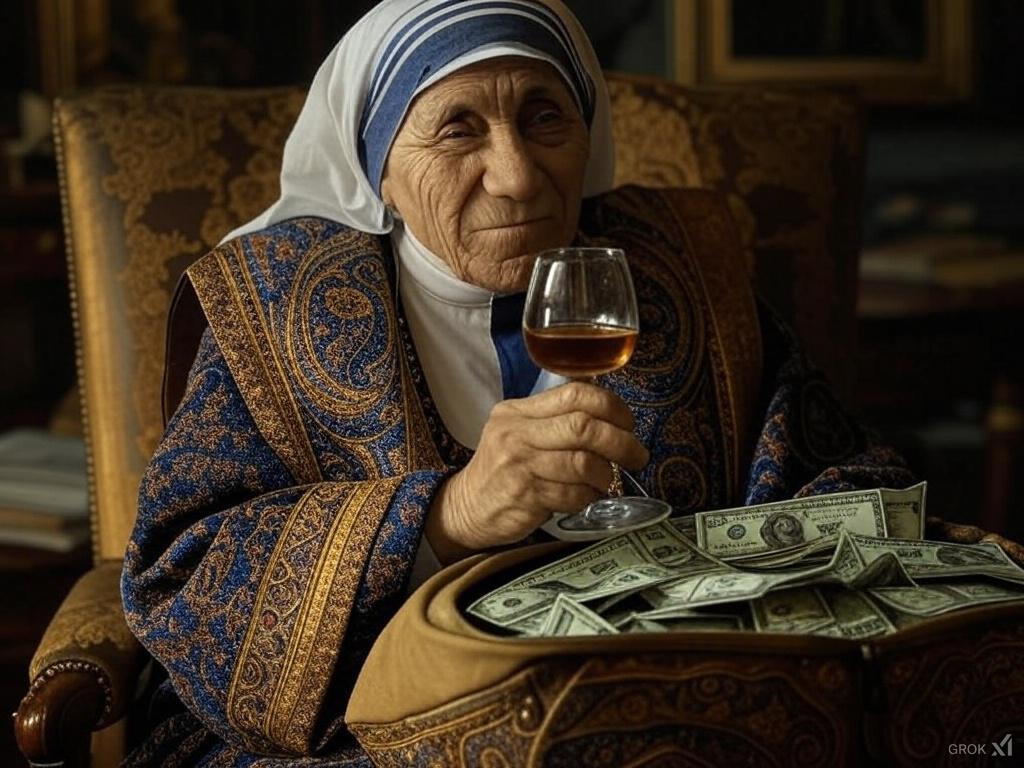
By Frank Calder
You’d think, after all these years, we’d stop swallowing fairy tales whole. But no. The myth endures: Mother Teresa, saint of the gutters, beacon of compassion, angel of mercy. Canonised by Rome, worshipped by the West. Yet, scratch beneath the pious veneer, and what you find isn’t divine. It’s the cold machinery of power, money, and spin—greased not by love, but by suffering. Convenient suffering.
Let’s start with the money. Millions poured in from all corners of the globe. From the devout and the deluded. From dictators and dodgy financiers. Charles Keating, the notorious American fraudster, handed her over a cool chunk of change—money stolen from the poor, laundered through the robes of the righteous. And what did Mother Teresa do? Returned it to the victims? No. She wrote to the judge presiding over Keating’s case, pleading clemency for a man who robbed thousands. No mention of the stolen funds. No accountability. The money stayed with the Missionaries of Charity, and by extension, the Catholic Church.
Millions. But where did it go? Certainly not into proper medical care for the dying. Accounts from those who worked in her clinics paint a grim picture: reused needles, lack of painkillers, unhygienic conditions. Suffering, she said, brought the poor closer to Christ. Easy words from someone who sought medical care at the best hospitals when she fell ill. The poor were left to rot. Their agony spiritualised for Western donors who lapped it up.
And the Catholic Church—Mother Teresa’s real employer—reaped the rewards. The brand was priceless: a living saint, cloaked in humility, preaching the glory of suffering while channeling untold wealth into the Church’s coffers. The Vatican knew a good thing when it saw one. Fast-tracked sainthood. Massive PR win. The suffering of millions in Calcutta became a spectacle, an advertisement for institutional power.
Yet still, the myth persists. Christopher Hitchens, in The Missionary Position, called her "a friend of poverty, not the poor." He was right. She praised the Duvalier regime in Haiti—murderers, thieves—because they funded her mission. She accepted honors from dictators, all the while preaching poverty as virtue. Poverty for others, of course. The Church remained rich.
So here we are. Decades later, the halo remains intact. The narrative, unchallenged. But the facts? They tell a darker story. Of money taken under false pretenses, of suffering exploited for institutional gain, of a woman who was less a saint and more a savvy operator for the Vatican’s interests.
And you have to wonder: after all these years, why are we still so eager to believe in saints?
Want to learn more: My sources are your sources (except for the confidential ones): The Lancet, New York Times, The Guardian, Vanity Fair, Reuters
The main image is machine generated.
